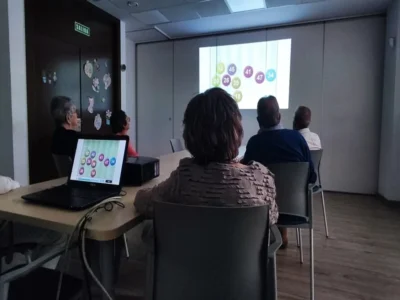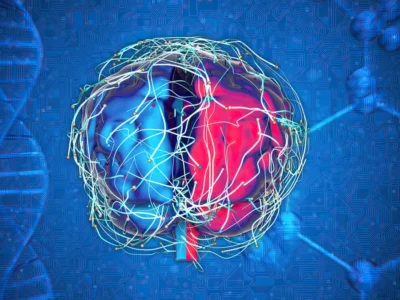Neuropsychologist Aarón F. del Olmo explains nonverbal learning disorder (NLD), its main characteristics and its diagnostic problem.
Even starting from the idea that, when we perform a task, the whole brain takes part in it, it is tempting to try to segment cognition in order to study it. Perhaps more than tempting, it allows us to have a false sense of security, as happens when we approach executive functions (García-Molina, 2018; Tirapu-Ustárroz, Molina, Lago, & Ardila, 2012). But, as is already known, many of those functions act together in that execution in a rather well-synchronized way. And that synchronization, and the way we automatize our functioning, is achieved during neurodevelopment.
In that neurodevelopment there are disorders or difficulties quite well known to all of us who work in the field of pediatric neuropsychology, where ADHD undoubtedly stands out, a disorder that still generates a bitter debate about its existence and/or real prevalence. But in general, and with permission from ASD (another of the best-known disorders), it is quite common to find diagnoses that refer to problems in the development of the left hemisphere, such as SLI, dyslexia or dysgraphia.
However, when we jump to the other hemisphere, the right, it is more complicated to find information about disorders that have their basis in an incorrect functioning of it.
Nevertheless, Johnson and Myklebust (1967) had already described almost 50 years ago a cognitive profile in children who, far from showing difficulties in those typical learning areas or language-related ones, presented other types of problems which, in the end, are more difficult to objectify, in what they called nonverbal learning disorder (NLD).
The aim of this post is to describe it, given the great lack of knowledge we have about it, and to try to reflect on the reason for this. A reason that really seems to be behind the diagnostic problem that exists in general in neurodevelopmental disorders and the precise reason why it is not recognized as such in the diagnostic guide commonly used, the DSM-V.
As I said, Johnson and Myklebust (1967) identified a sample of children who showed visuospatial problems, motor coordination and understanding of social context, closely related to the difficulty interpreting gestures associated with nonverbal language, which they linked to right hemisphere functioning.
Of course, these difficulties that affect more the manipulative and perceptual aspects result in a detriment in subjects that are not so “relevant” in the school curriculum (physical education, music or art) which really tells us about an asymmetry at the academic level as well, where those right-hemisphere skills have less weight than the left ones (García-Nonell, Rigau-Ratera, & Pallarés, 2006).
Characteristics of nonverbal learning disorder
Harnadek and Rourke (1994) described this presentation with the following characteristics:
- Bilateral deficits in tactile perception, somewhat more marked on the left side of the body,
- bilateral deficits in psychomotor coordination, although also somewhat more marked on the left side of the body,
- difficulties in visuospatial organization,
- difficulties working with new information and adapting to complex novel situations,
- deficits in solving nonverbal tasks, concept formation and hypothesis generation,
- difficulties in perceiving the sense of time,
- good development of automatized verbal skills,
- logorrhea characterized by being mechanical, repetitive, within pragmatic language disorders,
- deficits in arithmetic mechanics,
- significant deficits in perception, judgment and social interaction.
In a way, it could be said that these boys and girls often show verbal ability superior to what is expected for their age, as a sign that the left hemisphere acts somewhat compensating for those right-sided difficulties. Exactly the opposite of what happens in children with language impairments who compensate visually for their understanding of the environment.
Core domains within NLD
At this point we will focus on the three domains considered most “core” within this disorder:
Motor coordination
One of the most easily observable alterations has to do with the acquisition of motor routines. In this sense, there would be a great overlap with the diagnosis of developmental coordination disorder which is present in the DSM – IV manual.
Starting from this idea, children with nonverbal learning disorder may have difficulties in coordination, dyspraxia and in general would be labeled in their environment as “clumsy” children, avoiding games that involve motor skills.
This pattern is so relevant that other authors (Crespo-Eguílaz & García, 2009) even consider it a central axis of one of the redefinitions of NLD they propose, procedural learning disorder (PLD).
In this sense, drawing a certain analogy, while in SLI the automatization of language is impaired, or in other labels, that of learning to read or write, in NLD the attainment of motor “milestones” would be noticeably slower and, moreover, the learning of motor patterns would take much more time and difficulty for those affected.
As tests commonly used to observe this motor coordination, we would have the MACB – 2 specific battery, or different subtests of the NEPSY-II or Cumanin, although it is not a bad idea to remember that more aspects must be observed and not only the score obtained on these tests as such.
Visuo-spatial perception
On the other hand, at the visuospatial level, children with NLD may have difficulties with perceptual integration, specifically giving visual form to incomplete stimuli, as well as difficulties correctly perceiving orientation of elements, proportions and distances.
These alterations are quite difficult to detect at first, mainly because of the subjectivity of the perceptual experience, but they give rise to a significant difficulty in interpreting visual material, which secondarily affects the memorization of that type of material.
No wonder, when we talk about the right hemisphere, which is predominantly visual, it also plays an important role in the global interpretation of the environment. This, evidently, impacts the understanding not only of visual aspects but also the integration of nonverbal communication, something we will see in the next point.
Nonverbal language
Another major problem associated with NLD is the difficulty interpreting nonverbal language, which has a large weight in communication, often reversing what the verbal message itself intends to convey. Aspects such as prosody and non-literal meanings escape children who have these difficulties, but moreover, it is difficult for them to interpret and express that nonverbal language, which directly affects their social interaction with peers.
This last point is what leads other authors (Crespo-Eguílaz & García, 2009) to propose the PLD label and generate more organized criteria to define this disorder. Simply considering nonverbal language disorder to be a syndrome that includes the prosodic aspects mentioned earlier sounds somewhat incoherent.
Emotional impact
It is important to point out that all these alterations have a significant emotional impact on the child. Mainly due to the labels of “clumsy” or “weird” that arise as a result of the impact of their difficulties on the social sphere.
The fact of lack of detection or adequate knowledge of this disorder leads to creating an image of intentionality in the child’s behavior (lazy or slack for failing subjects that are “easy”), the child being very aware of their limitations and repeatedly crashing into them by not receiving adequate accommodations. This point contrasts enormously with other disorders that have a more frontal symptomatology, since the child with NLD makes more internal attributions about their performance).
A brief final reflection
To the lack of knowledge about nonverbal learning disorder we can really add the lack of understanding about how to approach neurodevelopmental disorders. Not surprisingly, it seems that the work carried out in this area is aimed at fitting the child into one of the preexisting labels and detecting behaviors without asking why.
Specifically, many children with nonverbal learning disorder have attentional difficulties, but derived from the difficulty in correctly processing visual aspects or at least automatizing their processing, without having an attentional problem per se. And that brings us back to the beginning of this post. Observable behavior is the result of the interaction of many processes that have been synchronized during neurodevelopment. In addition, it is hard not to be left with a feeling of staying on the surface of the problem if one does not attend to how that process has occurred, to the child’s history and, ultimately, to what causes that way of executing tasks.
Perhaps that is precisely why it is more difficult to describe NLD and see it within diagnostic guides that try to create labels as “airtight” as possible. And also, not to say it, oriented toward quick “diagnoses”.
It is therefore important to say that, although there are a series of signs within what would be NLD, we would have a different profile for each child, both in the signs that exist, the way they present (which also varies with age) and the impact it has for each child and their family in their day to day. And certainly, this analysis leads to better understanding how to provide the necessary supports for a better adaptation to the world around them, which in the end is usually the goal we pursue: to help.

Subscribe
to our
Newsletter
Bibliography
- Crespo-Eguílaz, N., & García, J. N. (2009). Procedural learning disorder: neuropsychological characteristics. Revista de neurología, 49(8), 409-416.
- García-Molina, A. (2018). Assessment of executive functions.
- García-Nonell, C., Rigau-Ratera, E., & Pallarés, J. A. (2006). Neurocognitive profile of nonverbal learning disorder. Revista de neurología, 43(5), 268-274.
- Harnadek, M. C., & Rourke, B. P. (1994). Principal identifying features of the syndrome of nonverbal learning disabilities in children. Journal of Learning Disabilities, 27(3), 144-154. https://doi.org/10.1177/002221949402700303
- Johnson, D. J., & Myklebust, H. R. (1967). Learning Disabilities; Educational Principles and Practices.
- Tirapu-Ustárroz, J., Molina, A. G., Lago, M. R., & Ardila, A. A. (2012). Neuropsychology of the prefrontal cortex and executive functions. Retrieved from https://dialnet.unirioja.es/servlet/libro?codigo=557535
If you enjoyed this article about nonverbal learning disorder, you might also be interested in these other posts:
“This article has been translated. Link to the original article in Spanish:”
Trastorno de aprendizaje no verbal







 Anosognosia: what it is, its history, and neuropsychological reality
Anosognosia: what it is, its history, and neuropsychological reality
Leave a Reply